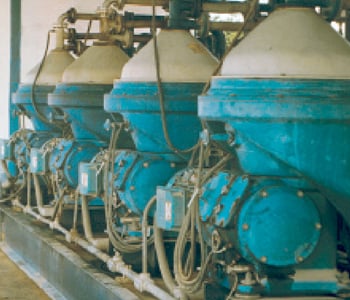Powering the pearl of the Caribbean
Margarita Island is a popular Caribbean tourist destination Because its economy is so heavily dependent on the tourist dollar, the island must provide a reliable supply of electricity to maintain essential services. Around 1975, CADAFE therefore set up a facility on the island to generate electricity in a gas turbine-powered plant.
DATE 2023-11-28Fuel oil treatment at Margarita Island power plant
Upgrading standard fuel
Gas turbines require high-quality fuel to perform at maximum efficiency. However, the standard distillate fuel oil available to CADAFE’s Margarita Island power plant contains a very high content of water-soluble trace metals such as sodium and potassium, as well as water and solid particles. All of these would have the effect of corroding the turbines’ hot gas path components and clogging the fuel system. Properly treated fuel, on the other hand, improves efficiency and reduces these maintenance costs and increases the performance and operational life of the turbine.
In 1977, Alfa Laval installed centrifugal separators at CADAFE’s Margarita Island power plant to purify the fuel oil. This system was specifically designed to remove the water soluble trace metals, water and solid contaminants in compliance with the gas turbine manufacturer’s specifications.
A new generation of fuel oil treatment
In 1999, SENECA bought CADAFE (from the government) and decided to upgrade the Margarita Island power plant to respond to increased demand for electrical power. General Electric gas turbines were added to maximize capacity to 180 MW. This meant that the quality of the fuel became an even more critical factor in keeping the turbines running at maximum capacity.
Alfa Laval installed a new generation of fuel treatment system, capable of processing 160m3 (42,270 gal) of distillate fuel oil per hour and including the newly designed GT range of separator. These have a special OPTIFLOW™ disc inlet feature that gives gentle acceleration of the process liquid and optimizes the performance of the fuel-cleaning process. These improved separators are able to remove the water, water-soluble salts, inorganic solids, and the sodium and potassium content, or reduce these to an acceptable level, down from ten to one part per million.
Diego Borges, Generation Manager:
Efficient and reliable operation is the key to consistently clean fuel that complies with General Electric gas turbine requirements. The Alfa Laval fuel oil treatment plant cleans 1 million litres of distillate fuel per day, with no operational problems.
The system
The main functions of the Alfa Laval modular fuel treatment system are pumping, straining, the centrifugal separation process and motor control. The centrifugal pumps draw untreated fuel through a duplex suction strainer and pump it to the centrifuges. During separation, unpurified fuel oil flows through the feed valve into the separator, where particulate matter and water are separated using centrifugal force. Water-soluble salts (sodium and potassium) are removed along with the water.
The centrifugal separators are equipped with an internal paring disc pump for pressurized discharge of purified distillate oil directly to the tank in which the treated fuel oil is stored, from where it is forwarded to the gas turbines. Purified oil and separated water are discharged continuously through their respective outlets, and solids accumulate at the periphery of the bowl.
Solids are discharged periodically before they build up to a point where they could interfere with the separation process. Discharged solids accumulate in the sludge tank built into the base of the system. Once the contents in the sludge tank reach a predetermined level, the oily water and sludge are pumped to SENECA’s waste treatment settling tank for further purification.
The entire Alfa Laval fuel oil treatment system is controlled and monitored from a skid mounted control centre. A state-of-the-art PLC-based control panel provides all the monitoring and operational functions necessary for the fully automated performance of the system.

Plant facts
- Fuel loading: 1,200 m3 (317,000 gal)/day
- Raw water storage: 2,000 m3 (528,300 gal)
- Fuel Oil Cleaning system
- Type: 4 x Alfa Laval GT 40 separators
- Fuel: Distallate oil
- Capacity: 160 m3 (42,270 gal)/h
- Treated fuel storage tank: 4,000 m3 (1,057,000 gal)
- Sodium + potassium reduction: 10 ppm down to < 1 ppm
Downloads
Tags
All